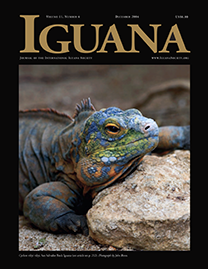Conservation of Galápagos Marine Iguanas (Amblyrhynchus cristatus)
Abstract
Galápagos Marine Iguanas are highly abundant along many of the archipelago’s shorelines. Total estimated population size varies between 37,000 and 280,000 individuals. Marine Iguanas have evolved in the absence of major predators, and their populations are regulated by cyclically recurring famine (El Niño) and feast (La Niña) events. Population declines are strongly density-dependent: the higher the population density, the higher the mortalities during El Niños (from 10–90%). Recovery after El Niños is rapid, as females compensate by reproducing younger and laying more eggs. Marine Iguana morphology differs between islands. Seven subspecies have been proposed, although only three major clades can be distinguished genetically. Twelve populations (approximately 74% of all Marine Iguanas) still live in pristine environments, whereas five populations (26% of all Marine Iguanas) suffer from anthropogenic influences. Major conservation problems arise from introduced predators (cats, dogs, rats, and pigs) and from combinations of natural events (El Niño) and anthropogenic disasters such as oil spills. The most recent oil spill in 2001 killed 62% of all Marine Iguanas on Santa Fe Island. Management requirements for the future include: (i) investigating population trends in Western Isabela and San Cristobal islands, (ii) investigating whether harbor areas are population sinks because of environmental contaminants, (iii) establishing a recovery program for oil-contaminated iguanas, especially their reinoculation with hindgut microsymbionts, and (iv) developing husbandry techniques and establishing a captive propagation program as a population backup plan (Marine Iguanas have not been bred in captivity).

